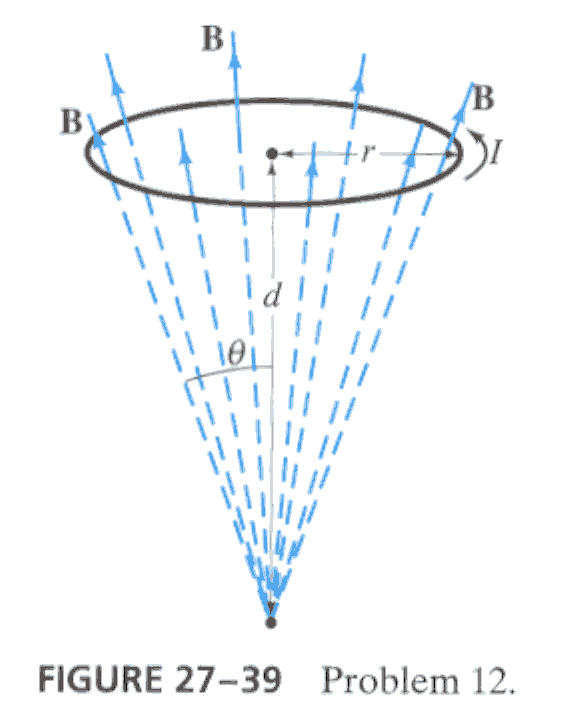
CHAPTER 27 HOMEWORK
1. (p.704 Ex.7) The force on a wire is a maximum of 5.30N when placed between the pole faces of a magnet. The current flows horizontally to the right and the magnetic field is vertical. The wire is observed to "jump" toward the observer when the current is turned on. (a) What type of magnetic pole is the top pole face? (b) If the pole faces have a diameter of 10.0cm, estimate the current in the wire if the field is 0.15T. (c) If the wire is tipped so that it now makes an angle of 10° with the horizontal, what force will it now feel?
2. (p.705 Ex.19) For a particle of mass m and charge q moving in a circular path in a magnetic field B, (a) show that its kinetic is proportional to r2, the square of the radius of curvaature of its path, and (b) show that its angular momentum is L = qBr2, about the center of the circle.
3. (p.705 Ex.27) A proton moves through a region of space where there is a magnetic field, B = (0.45i + 0.20j)T and an electric field E = (3.0i - 4.2j) x 103V/m. At a given instant, the proton's velocity is v = (6.0i + 3.0j - 5.0k) x 103m/s. Dettermine the components of the total force on the proton.
4. (p.706 Ex.35) A circular coil 17.0cm in diameter and containing twelve loops lies flat on the ground. The Earth's magnetic field at this location has magnitude 5.50 x 10-5T and points into the Earth at angle of 66.0° below a line pointing due north. If a 7.10-A clockwise current passes through the coil, (a) determine the torque on the coil, and (b) which edge of the coil rises up, north, east, south, or west.
5*. (p.705 Ex. 12) A circular loop of wire, of radius r, carries current I. It is placed in a magnetic field whose straight lines seem to diverge from a point a distance d below the ring on its axis. (This is, the field makes an angle q with the loop at all points, Fig. 27-39, where = r/d.) Determine the force on the loop.

6*. (p.706 Ex.37) Suppose a nonconducting rod of length l carries a uniformly distributed charge Q. It is rotated with angular velocity w about an axis perpendicular to the rod at one end. Show that the magnetic dipole moment of this rod is 1/6Qw l2.[Hint: Consider the motion of each infinitesimal length of the rod.)